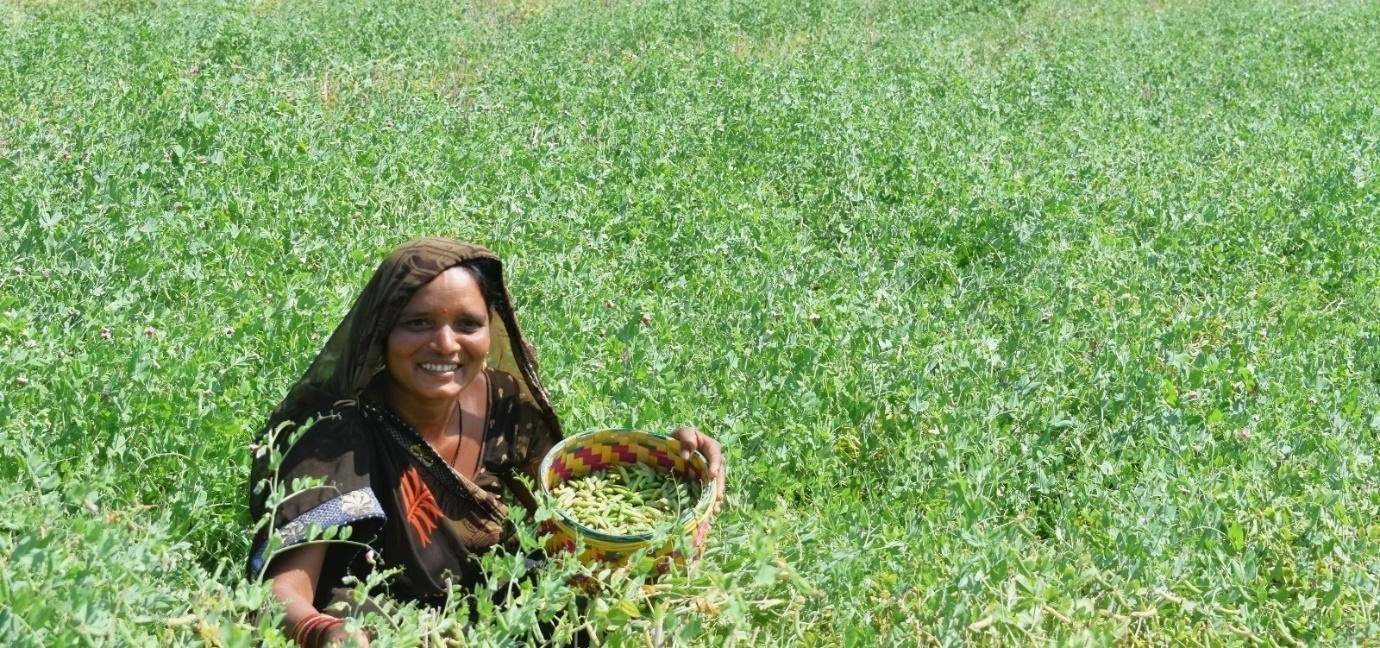Achieving critical mass for the greening of rice fallows in Odisha
- From
-
Published on
16.04.24
- Impact Area

Growing pulses and oilseeds crops in rice fallows provide farmers with additional income, livelihood opportunities, and food and nutrition security. (Photo: IRRI India)
CGIAR centers are collaborating with the Department of Farmers’ Empowerment of Odisha to bring rice fallows into cultivation under the Comprehensive Rice Fallow Management Project.
In the past two decades, Odisha has demonstrated remarkable resilience to droughts, cyclones, and floods. The state has achieved surplus paddy production thanks to timely and effective government actions such as improving irrigation facilities and promoting stress-tolerant crop varieties and climate-smart crop establishment methods like direct-seeded rice (DSR).
Odisha has 6.15 million hectares (ha) of agricultural land and over half is under paddy cultivation. However, following the kharif rice crop, a significant portion of land remains fallow during the rabi season.
Farmers in the coastal districts of Puri, Jagatsinghpur, and Jajpur and the irrigated belts in Sambalpur, Bargarh, and parts of Koraput and Kalahandi can grow green gram, black gram, chickpea, lentils, mustard, sunflower, sesame, and others crops during the rabi season.
But this is not the case in the uplands and medium lands in western and southern Odisha where farmers cannot grow a second crop because the soil is too dry. The opposite is true in the state’s lowlands coastal areas where the soil is too wet after the rice harvest preventing farmers from growing rabi crops.
Other factors compel farmers to plant only rice crops. Cultivating long-duration rice varieties that take around five months before they can be harvested gives them little time to plant another crop.
The shortage of agricultural workers is another issue because traditional planting methods are labor-intensive. Insufficient irrigation, open livestock grazing after rice harvest, and fragmented land holdings limit farmers’ opportunities to grow a second crop.
Related news
-

CGIAR Climate Security team pilots a new research approach for the development of Nature-based Solutions in fragile settings
Ibukun Taiwo27.11.25-
Climate adaptation & mitigation
Responding to complex crises requires new systemic research approaches that help identify entry poin…
Read more -
-

Drones prove their worth in measuring livestock methane in Africa
International Livestock Research Institute (ILRI)26.11.25-
Mitigation
In May 2024, the International Livestock Research Institute (ILRI) and partners shared news of the…
Read more -
-

Pioneer adaptation farmers inspire adoption of climate-smart innovations in Bomet County, Kenya
International Livestock Research Institute (ILRI)24.11.25-
Adaptation
In Bomet County, Kenya, where agricultural traditions run deep, two families and their farms are…
Read more -
